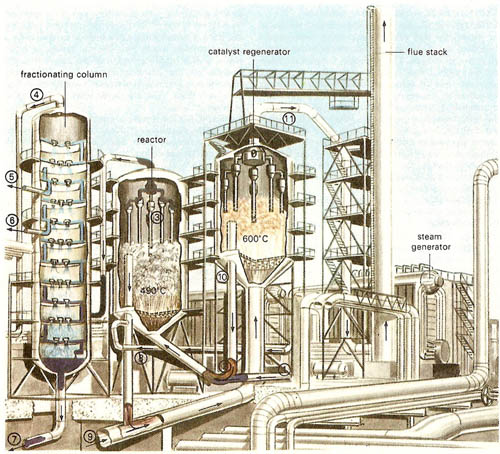cracking

Catalytic cracker. The feedstock of long-chain hydrocarbons (1) is mixed with hot catalyst (2) and vaporized. The vapor/powder mixture is carried to the reactor where the cracking reactions occur. Cyclones (3) extract the cracked hydrocarbon vapor and pass it to the fractionating column where it is fractionated, yielding petroleum gases and gasoline (4), light gas oil (5), medium gas oil (6), and heavy gas oil (7). Spent catalyst meanwhile is mixed with steam (8) and carried in a current of hot air (9) to the catalyst regenerator where it is cleaned and recycled (10. Waste gases are drawn off (11) and vented.
Cracking is a process by which heavy hydrocarbons in petroleum are broken down into lighter molecules and isomerized, by high temperatures or catalysis. It yields branched-chain alkanes and alkenes of high octane rating for gasoline, and also simple gaseous alkenes for chemical synthesis.


